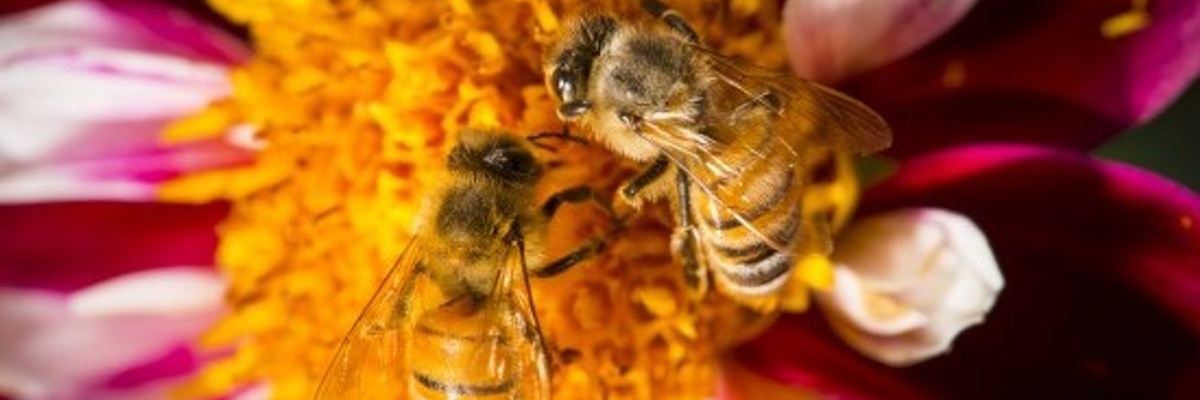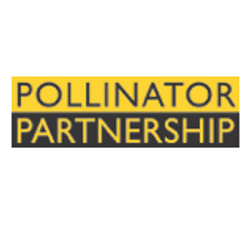

Whether you are a farmer of many acres, land manager of a large tract of land, or a gardener with a small lot, you can increase the number of pollinators in your area by making conscious choices to include plants that provide essential habitat for bees, butterflies, moths, beetles, hummingbirds, and other pollinators. Happy planting!
Whether you are a farmer of many acres, land manager of a large tract of land, or a gardener with a small lot, you can increase the number of pollinators in your area by making conscious choices to include plants that provide essential habitat for bees, butterflies, moths, beetles, hummingbirds, and other pollinators. Happy planting!
Our pollinator garden has received yet another shoutout!
Polly the Pollinator shares the buzz on what's happening at Nokesville Library in this exclusive interview by Independent Hill Library's mascot Peek-a-Boo!
#PWPLibraries #MeetTheMascotsPWPL
https://youtu.be/4iioevpV5kQ

Not only have the bees found the October Skies, but they are literally rolling in the pollen!

October 19, 2023
The October Skies asters are beginning to bloom and the bees have found them!

October 11, 2023
The hummingbirds have departed for warmer climes and their feeders are put away for winter. Thank you to Rebecca for caring for the little guys this season.
September 26, 2023
I drained the rain barrel and distributed tropical storm Ophelia's bounty to the front garden beds. The crab apple tree (at the entrance beside the library sign) has red fruit. Last fall I watched a flock of robins pick that tree clean of fruit in just a few minutes. Crab apples are a North American native and the ripening of their fruit coincides nicely with the fall migration.
Despite the low clouds and mist this morning, I enjoyed the drive along Aden Road to Nokesville because the dogwood and sumac foliage is turning brilliant shades of red. Perhaps the gray sky accentuated the red leaves. Dogwood berries and sumac drupes are also turning red and ripe. The red foliage is a sign to migrating birds "fruit here, come and get it". Then the birds will continue their migration, spreading the seeds far and wide.
Today five swallowtail caterpillars are on the fennel.




September 20, 2023
There are now 17 swallowtail caterpillars of various sizes munching fennel!
On the swamp milkweed the seed pods have opened. Anyone who would like seed is welcome to help themselves. Note that milkweed seed requires cold stratification - plant it outside this fall so it will be cold & wet all winter. If you save it to plant in spring it won't germinate.
Phyostegia virginiana is blooming under the crabapple tree. It's a good plant to support the hummingbirds' fall migration. It's also fun to watch bumblebees crawl inside the blossoms.

September 15, 2023
The three large swallowtail caterpillars that were in the pollinator garden last week are pupating now ( probably hidden in the nandina shrub). Four new little swallowtail cats have taken their place on the fennel.
The coneflowers look wretched - the bloom stalks and seed heads are brown. They aren't feeding pollinators now so why don't we cut them down to tidy up the garden? Birds love to eat coneflower seeds. We let the plants stand into winter so birds can enjoy the seeds. As a bonus, the birds drop a few seeds on the ground which germinate and increase our coneflower patch.





September 8, 2023
The boys of summer have gone. If you're only seeing female hummingbirds at your feeder, it's not just you. Males migrate first then the females hang around for a month gaining a layer of fat before leaving. Since female hummingbirds build the nest, incubate the eggs and feed the young themselves with no assistance from the males they need extra time to forage in Virginia before migrating to Central America. With no males at the feeder now, the lady birds have a better opportunity to feed.
I discovered three handsome beasts in the pollinator garden this morning... swallowtail cats!

August 23, 2023
In the pollinator garden, vernonia Iron Butterfly (aka ironweed) is in full bloom. Iron Butterfly is a cultivar of a native plant which was selected because it's shorter, bushier and longer blooming than the native ironweed found in the wild. The native is about five feet tall with coarser foliage. If you visit the Neabsco Creek boardwalk, the wetlands there is blanketed in native ironweed creating a sea of purple with scads of butterflies. On the western side of the county, you can see large stands of ironweed at Manassas National Battlefield in the Groveton Road area (along the Deep Cut).





Hummingbird moths and bees are loving the ironweed!
August 9, 2023
Today in the garden, I scrutinized the milkweed plants in search of caterpillars. No joy. But I did find a whole biome in the milkweed patch. The tiny creatures I encountered included milkweed bugs, beetles, crickets and katydids. Can you find them in the photos or is their camouflage effective?
There was also a preying mantis about an inch long who nimbly jumped from leaf to leaf defying my attempt to photograph it. Poor little guy was camera shy.




August 2, 2023
Welcome August! Although it certainly feels like summer, subtle signs of fall have begun to appear. In the front garden lobelia siphlitica is blooming while phyostegia virginiana and anemone Honorine Jobert are budded. In the pollinator garden a few purple blooms have appeared on the October Skies asters and the coneflowers are droopy. When coneflower blooms open, the center cone isn't really shaped like a cone, it's a small button. After pollination as the seeds develop, the cone shape grows larger and larger. The weight of the cone causes the flowering stems to droop and flop. Finches who pick out the seeds add to the flop. The finches drop a few seeds and seedlings are now growing beneath the original plants.
Another sign of fall is feisty hummingbirds. The 2023 nesting season has been completed and the juveniles are independent. Fall migration is a month away so both juveniles and adults are feeding heavily to create fat reserves before migration. Although Rebecca maintains multiple feeders on different sides of the building the hummers feel compelled to fight over the feeders. It's fun to watch the aerial combat but we don't want anybody (anybirdy?) to be injured.

A live action photo! Good work Ursula!
July 26, 2023
An esteemed visitor graced our garden today. Although many flowers are in bloom, it nectared exclusively on the swamp milkweed. It would feed then fly around a few minutes and return to feed again. I worked in the gardens for about three hours and the monarch was there at least that long.

We love seeing new guests in our pollinator garden and one such special visitor is the hummingbird moth. They vary so much in their coloring and are such fun to watch. The milkweed continues to attract bees, but we have yet to see any monarchs this year.





Thanks! Trusty cell phone! :)
Great photos!
July 19, 2023
Today in the pollinator garden I deadheaded the Coronation Gold yarrow. I walked back toward the treeline with a big arm load of yarrow stalks to compost and came face to face with a wild turkey! We were both astonished. The hen disappeared quickly into the brush while I stood with my mouth gaping. Later while I was relating my turkey encounter to Ursula, we were buzzed at close range by two hummingbirds chasing each other. Rebecca maintains multiple hummingbird feeders so all the birds can feed in peace but male hummers have an emotional need to spar.

6 Participants
